Yes, it does snow in New Zealand. Snowfall in New Zealand varies from region to region, with the mountainous regions (Central Plateau & Southern Alps) receiving the highest amount of snow and coastal regions experiencing none to very little snow.
Let’s talk about snow and the seasons in New Zealand, something you might want to know about if you are planning to visit the country.
You might be interested in: Places to Visit in New Zealand
New Zealand Weather By Season
The climate of New Zealand is complex due to its diverse landscape encompassing two main landmasses: the North Island and the South Island.
While the northern region experiences subtropical climate conditions, the southern region experiences cool climate conditions, and the mountains are characterised by alpine conditions.
Further, New Zealand has four distinct seasons: spring, summer, autumn, and winter.
Now, let’s talk about the four different seasons in a bit more detail.
When is Winter in New Zealand?
New Zealand, especially the mountainous regions, see snow from June to August. But snow can appear outside these months as well. Also, in some areas of New Zealand, snow can be found throughout the year; year-round snow-cloaked mountains are an attractive tourist feature of the country.
During the winter months, the temperatures range from 12 to 16 degrees Celcius, with cooler climates and occasional rainfall – the temperatures in the alpine regions can drop to 10 degrees Celcius during winter.
When is Summer in New Zealand?
The Summer in New Zealand is from December to February, but the season could stretch to mid-March. New Zealand’s summers are hot but not humid. The average temperatures range from 21 to 25 degrees Celcius. The days are long with lots of sunshine, and summer rainfall is rare.
December is the start of the summer season, but it can still feel a bit like spring in the northern region, with cooler climates.
The peak Summer month is January, with school holidays in effect; January is also the month when New Zealand sees the highest number of tourists.
February is among the hottest months in New Zealand. If you visit the country during this time, you can enjoy a range of Summer festivals.
When is Spring in New Zealand?
With vibrant colours and a cheery atmosphere, New Zealand experiences Spring in September, October, and November. The temperatures vary between 16 to 19 degrees Celcius. However, Spring weather conditions in New Zealand swing between sunny days and Spring showers.
September is the first month of the season, with the environs still transitioning into Spring. Snow is a common encounter in the alpine regions during September, and it’s still too cool to swim in the lakes – New Zealand’s ski season extends to mid-September.
In North Island, September is practically still winter, with rainy days.
With daylight savings, you can enjoy longer days in October. Labour Weekend is the highlight of the month, with kiwis flying to the islands in search of warm weather.
November is an excellent time to visit New Zealand, especially if you want cheap accommodation. This is a quiet month with plenty of options. The temperatures are getting warmer, making way for those who want to soak up the sun rays at beaches.
November is also the perfect time to visit South Island’s national parks like Abel Tasman and Mount Cook.
When Is Autumn in Zealand?
Autumn extends from April to May in New Zealand. This is when you can experience the most reliable weather in the country.
Golden leaves and sunny days invite adventurers, especially those who want to enjoy activities like kayaking, cycling, and hiking. The average temperatures range from 7 to 21 degrees Celsius.
Related Articles: All About New Zealand Volcanoes | Is there Uber in New Zealand?
Where Does It Snow In New Zealand?
So, if you’ve decided to visit New Zealand during the winter months, here’s a list of places that offer you the best chance of enjoying your winter holiday.
Mount Cook
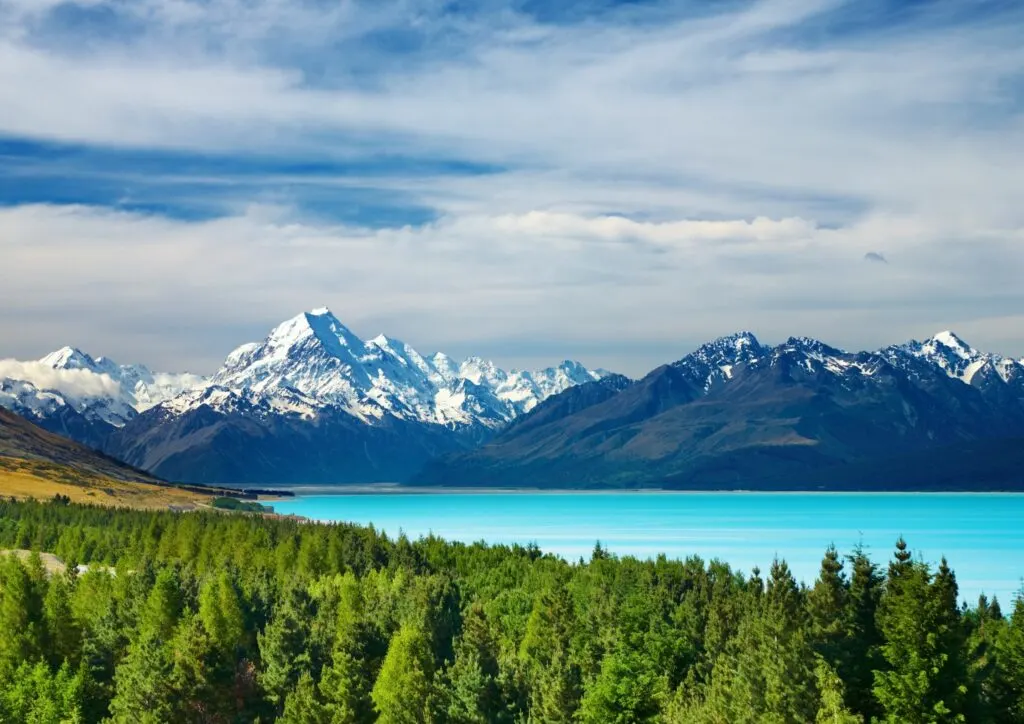
At 3700 meters, Mount Cook is the highest mountain in New Zealand and is renowned for being snow-capped all year round. Mount Cook National Park is home to numerous hiking trails, yet the most sought-after one is Hooker Valley Track.
Tongariro Alpine Crossing
Looking for something challenging? Trekking Tongariro Alpine should be at the top of your list. Living up to the reputation of New Zealand’s alpine regions, Tongariro Alpine is blanketed with snow.
Apart from adding to the enchanting beauty of the area, the snow-capped peaks found here also bring you panoramic views over the legendary crates.
Lake Wanaka
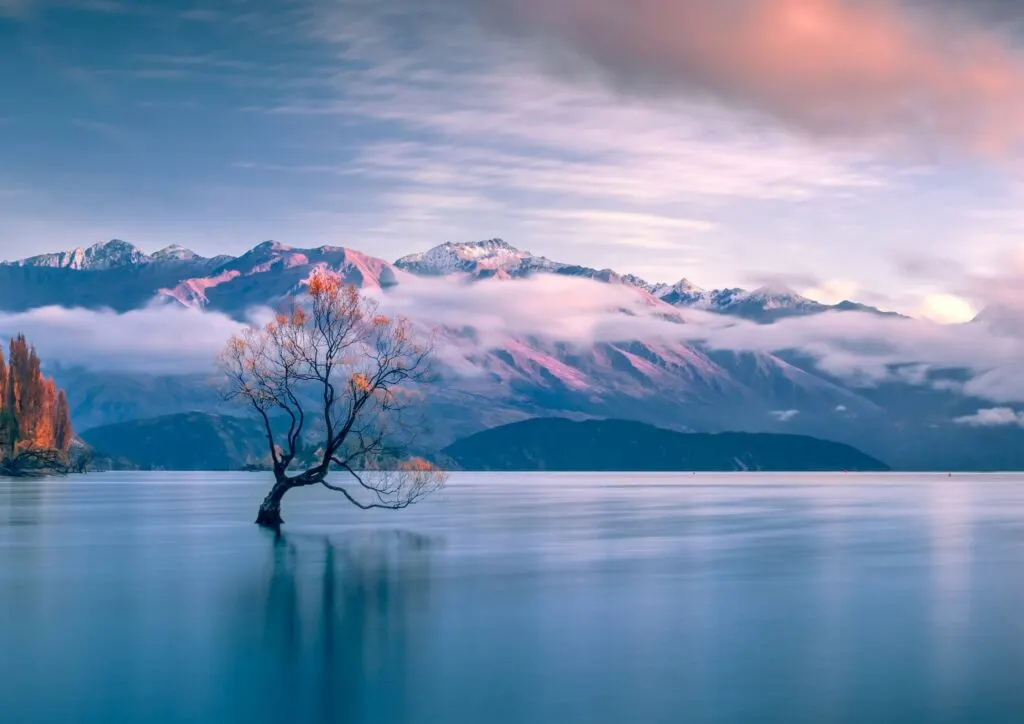
This is one of the most beautiful locations to enjoy snow in New Zealand. Surrounded by snow-peaked mountains, Lake Wanaka becomes a spectacular sight during winter. You can also enjoy an array of winter activities here.
Mt. Ruapehu
Another stunning location covered with snow, Mt. Ruapehu, is a volcanic peak which last erupted in 2007. During the winter, the mount becomes a complete snow land.
Turoa and Whakapapa are the two must-visit places here, especially if you want to enjoy some skiing.
Mt. Hutt
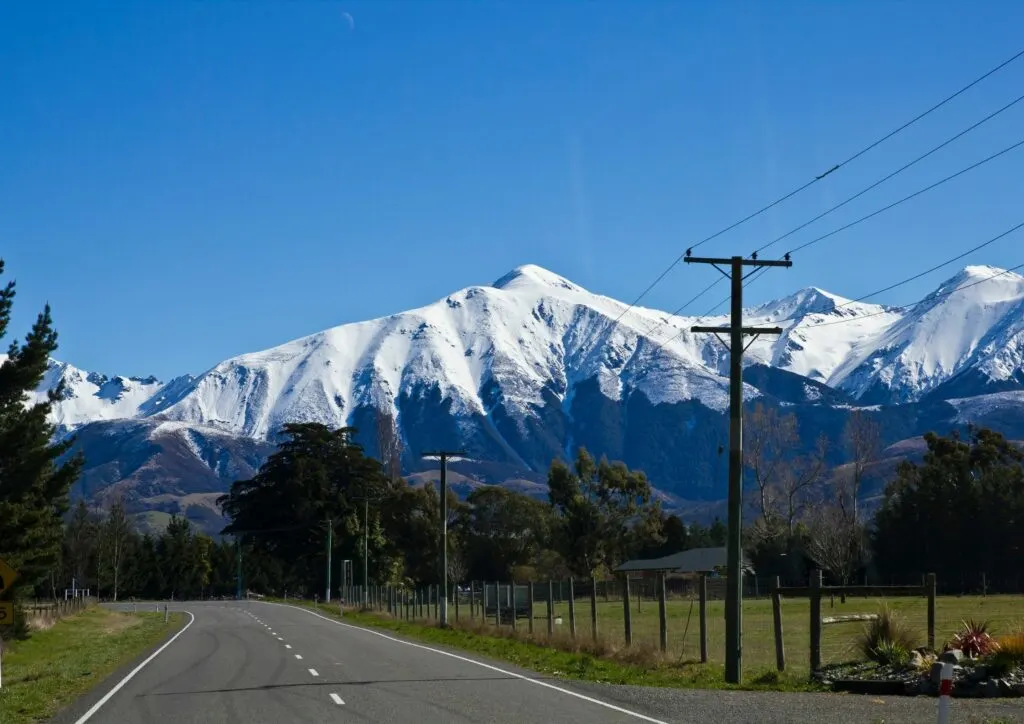
Popular as one of the best places to enjoy snow in New Zealand, Mt. Hutt will offer you an unforgettable winter holiday experience.
Tobogganing, snowboarding, skiing, and sightseeing are some of the things you can enjoy. If you are a first-time skier, you should definitely visit Mt. Hutt to get adept at skiing.
Arthur’s Pass
If you want to relax while enjoying the magic of snow in New Zealand, go for a drive through Arthur’s Pass.
The roads are fringed with snow-drizzled trees in the backdrop of tall mountains with snowy peaks. The scenery changes as you drive along.
The road takes unexpected twists, turns, and bumps, so we suggest that you hire an experienced driver.
Mt. Taranaki
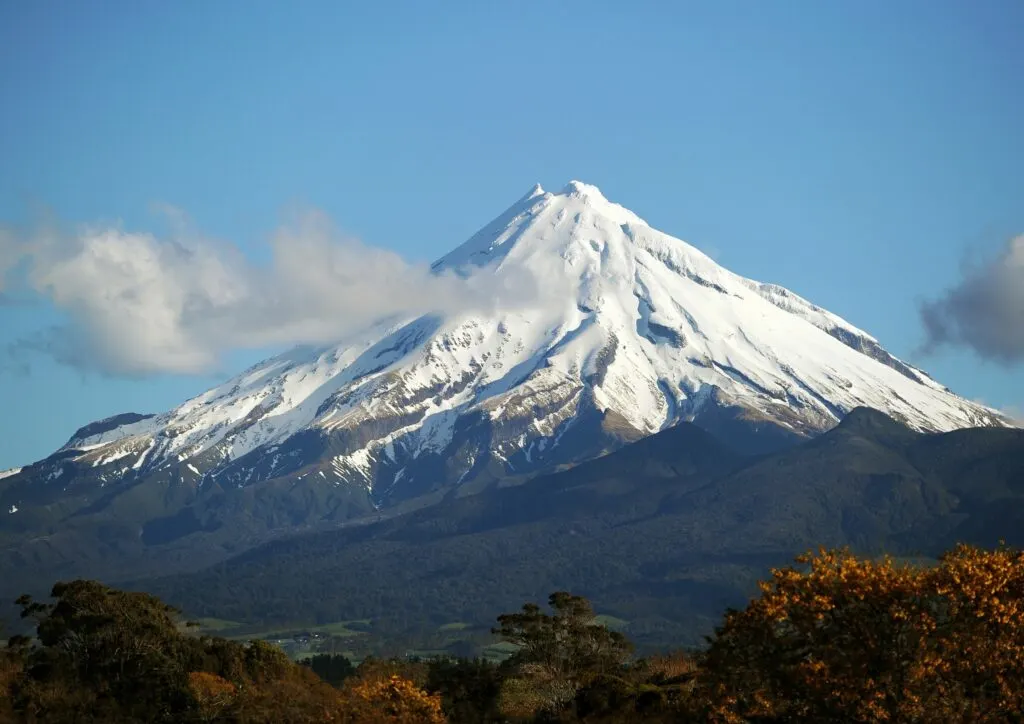
Another volcanic peak blanketed with snow during winter, Mt. Taranaki rewards you with beautiful panoramic views that encompass the snow-covered area. Trekking and mountaineering are popular activities, which are only suggested to those with previous experience.
But don’t let your lack of experience deter you from enjoying this beautiful peak; you can get a guide to accompany you.
Roys Peak
Hiking here should make you giddy with joy. Roys Peak is a great place for hikers in New Zealand.
You can hike here at any time you want, but a winter hike might be better suited to those who want to see snow; an added bonus would be fewer crowds – check the weather report before making your trip; snowfall can sometimes be quite harsh here.
Lake Tekapo
In the winter months, Lake Tekapo transforms itself into a surreal beauty with the help of the surrounding environs dotted with whitewashed mountains.
You can also find two ski areas here, known for beautiful panoramic views of Mackenzie Basin, Mt. Cook, and the lake. Ice hockey and ice skating are two activities you can enjoy here.
Milford Sound
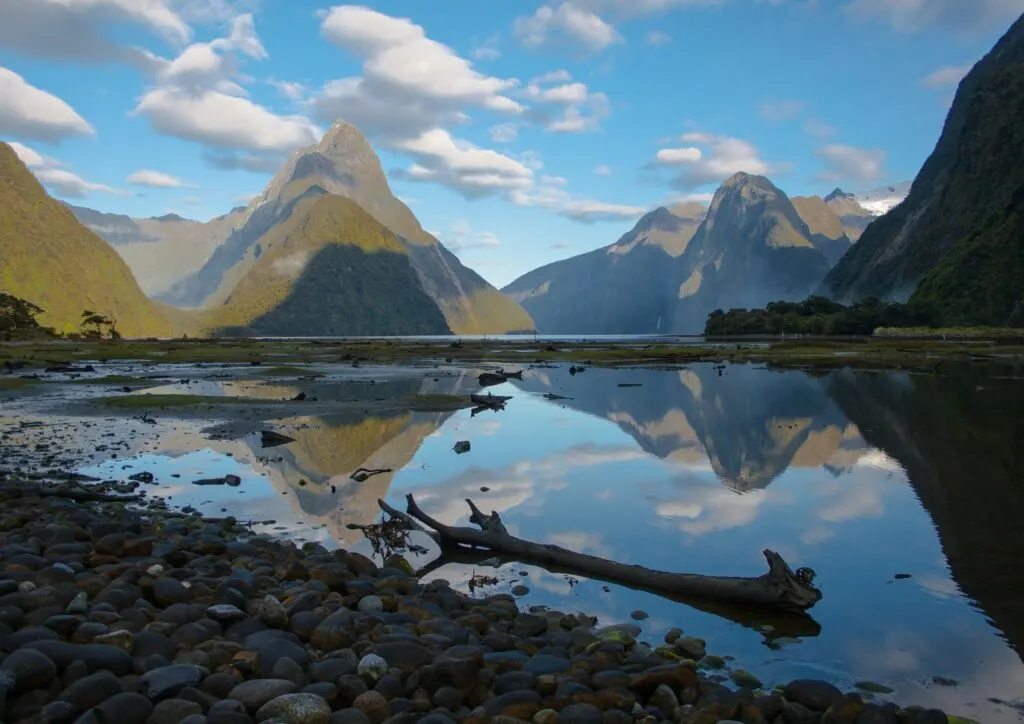
With the mountains getting covered in snow and the days becoming shorter and darker, Milford Sound doesn’t attract huge crowds during winter, but it’s a place that you must visit, especially if you want to enjoy the beautiful season without the din of crowds.
Hiking is possible, but some trails are closed during winter due to heavy snow – we suggest you check with a guide before getting here.
New Zealand Snow And Winter Activities
An extensive list of winter activities awaits those who want to enjoy a winter holiday in New Zealand; the list includes a few unusual winter activities, too!
- The Matariki Festival
- Skiing
- Snowboarding
- Snowshoeing
- Hot spring baths
- Watching Humpback whales in Kaikoura
- Star gazing
- Hiking
- Cycling
Best Time To Visit New Zealand
Summer is generally considered to be the best time to visit New Zealand. This is when you can enjoy a lot of outdoor activities like hitting the beaches, hiking, mountain biking, and cycling.
That said, the diverse landscape of New Zealand makes it a year-round destination for tourists.
Are Seasons In New Zealand Flipped?
Yes, seasons are flipped in New Zealand. The reason is due to the country’s location in the southern hemisphere. The winter and summer months work in reverse order.
For instance, people in New Zealand celebrate the new year when summer is still at its peak while July is considered the best month for winter activities like skiing, snowmobiling, and snowboarding.
